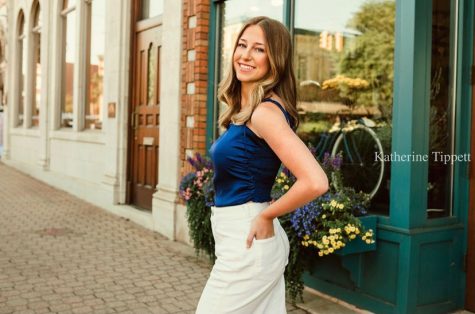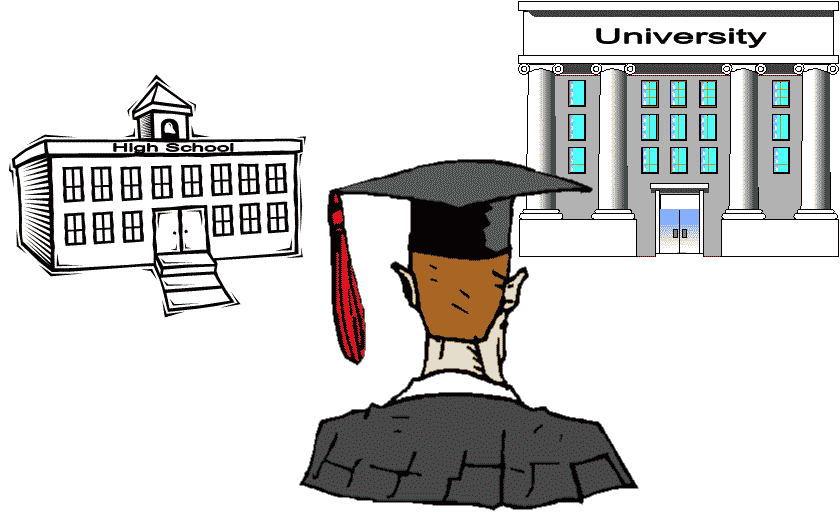High school vs. college teaching: teachers reveal the fundamental differences behind both
Chemistry teacher Russell Chudy has taught a variety of different students throughout his teaching career; whether they’re over-achievers, slackers, or simply the average student. He’s seen everything.
“Everything” in the most literal sense: he recalls a student he had at Grand Valley State University (GVSU) who would never attend chemistry class solo; her service dog always tagged along with her.
“She’d bring him every week to lab,” Chudy said. “He wore goggles, too.”
Of course, Chudy is known as FHC’s beloved Chemistry 210 and 215 teacher, but additionally, he teaches science at GVSU. Occupying and balancing two teaching jobs is tough, but as noted, can bring a lot more memorable and silly experiences.
Two more FHC teachers also have college teaching experiences—one being current and one left in the past. Calculus and Computer Science teacher Joe Smith used to work at Aquinas College. There, he taught Computer Information Systems to college students interested in coding for thirteen years.
“My own children were getting older, and they had more activities on the nights I was teaching [at Aquinas],” Smith said. “I decided that I needed to be around [them] more as a dad.”
Smith’s decision to devote his time to FHC and, most importantly, his family, has left him to reflect on his former time at Aquinas.
Balancing two high-end teaching jobs could be seen as a struggle, but Smith pleads otherwise. At least, not in the end it wasn’t.
“At first, [it was hard],” Smith said, “but after a couple of years, it wasn’t too bad.”
When he first began teaching at Aquinas, his class hours were from 6:30 p.m. to 10:30 p.m. on Thursday evening. After a couple of years, he altered his schedule so that he’d teach the class on Tuesdays and Thursdays from 4:00 p.m to 6:00 p.m.
“While this meant I was working two days a week,” Smith said, “I was home for dinner every night—which was important.”
Although he said a four hour long class was tough, he did it for his family.
Sticking with Aquinas College, Anne Keller—who teaches AP Lang and freshmen English here at FHC—still works there to this day. She has taught different classes there since the late 90’s, although more consistently within the past two years. Though this year, she’s devoted to teaching a class titled Introduction to Environmental Studies.
One thing she admires about her second job is the level of thinking and engagement given from college students.
“I enjoy the content that I teach which allows me to use my PhD in Environmental Studies,” Keller said. “I love helping young people understand why environmental issues are important and to see their role in helping our world be more sustainable.”
Keller loves the fact that, for one, her class at Aquinas can apply a way of looking at life, and two, she adores the way Aquinas cares for real-life purposes, not just a strict education.
“Aquinas is very committed to sustainability,” Keller said, “I appreciate working for an institution that holds those values and promotes them in its students and staff. I wish all of our educational institutions had a similar commitment to the environment and sustainability.”
There’s a big difference between high school and college; specifically, the certainties of teaching and student work ethic. For Smith, he noticed student accountability to differ hugely.
“I didn’t have to deal with parents,” Smith said. “Students are responsible for the consequences of their decisions. When they miss class, they deal with the consequences.”
He also noticed how students can evolve into completely different workers in college, and how now that they’re truly preparing for the real world, they’ve changed.
“I taught students that wanted to be in class,” Smith said. “They were paying for the opportunity to learn. I think the motivation changes when you are in college.”
Keller, subsequently, has noticed the exact same thing: college students are more self-directed and independent when taking a class that they could potentially utilize in life.
“They [make] connections in their coursework between information in my class and their other classes, as well as thinking about their college majors and career goals,” Keller said. “There is more focus on their future work and the relevance of their coursework to those goals.”
Whereas comparing them to high school students, they’re still trying to figure out how to excel in high school, especially considering she teaches the newcomers of the building.
“[Freshmen] are trying to navigate being in a new building and [the] high school expectations,” Keller said. “[Juniors] are beginning the process of thinking about where they want to go next. They just spent some time planning their future courses, updating their resumes, and thinking about prospective schools. They haven’t quite yet achieved the same level of independence as my college students.”
Obviously, with the prevalence of COVID-19, there has been action taken at FHC, GVSU and Aquinas. Aquinas, specifically, has taken important protocols, like FHPS, to abide under the rules to keep all students safe and healthy. For instance, their hallways and stairwells have directional arrows, wipes are used at the start and end of each and every class, and there are many restrictions in place to keep the buildings clear. They made it clear and simple when it came to students quarantining, and with that, college students were proactive with Zooming, informing their teachers, and getting ahead on class work.
“I actually had more information from them about protocols, health screeners, and expectations during the summer months well before FHPS announced their plans,” Keller said. “Because it is a residential college, there are many procedures if someone doesn’t feel well. There was also a COVID dashboard very early on that indicated the number of people who had been impacted. Communication was clear from the beginning.”
For GVSU sciences, Chudy mentioned that more than half of the labs are now online.
Virtual school can be a difficulty, but most students have learned how to deal and communicate with it. Working through a pandemic takes independence, but simply put, so did regular school before COVID hit. Teachers hold the same standards above students’ heads—no matter the age or potential. What teachers most want is to see their students succeed and persevere, and balancing two teaching jobs at both a high school and local college puts that into perspective.
“When you teach a college course, the expectation is that students are prepared, engaged, and responsible,” Keller said. “I have the same expectations for all of my students—no matter the level. I believe that each person is in charge of their education; you get out of learning what you put into it.”

Avery is a senior entering her third and final year writing for The Central Trend. She is a member of two different dance teams— Imprint Dance Company...



























































































